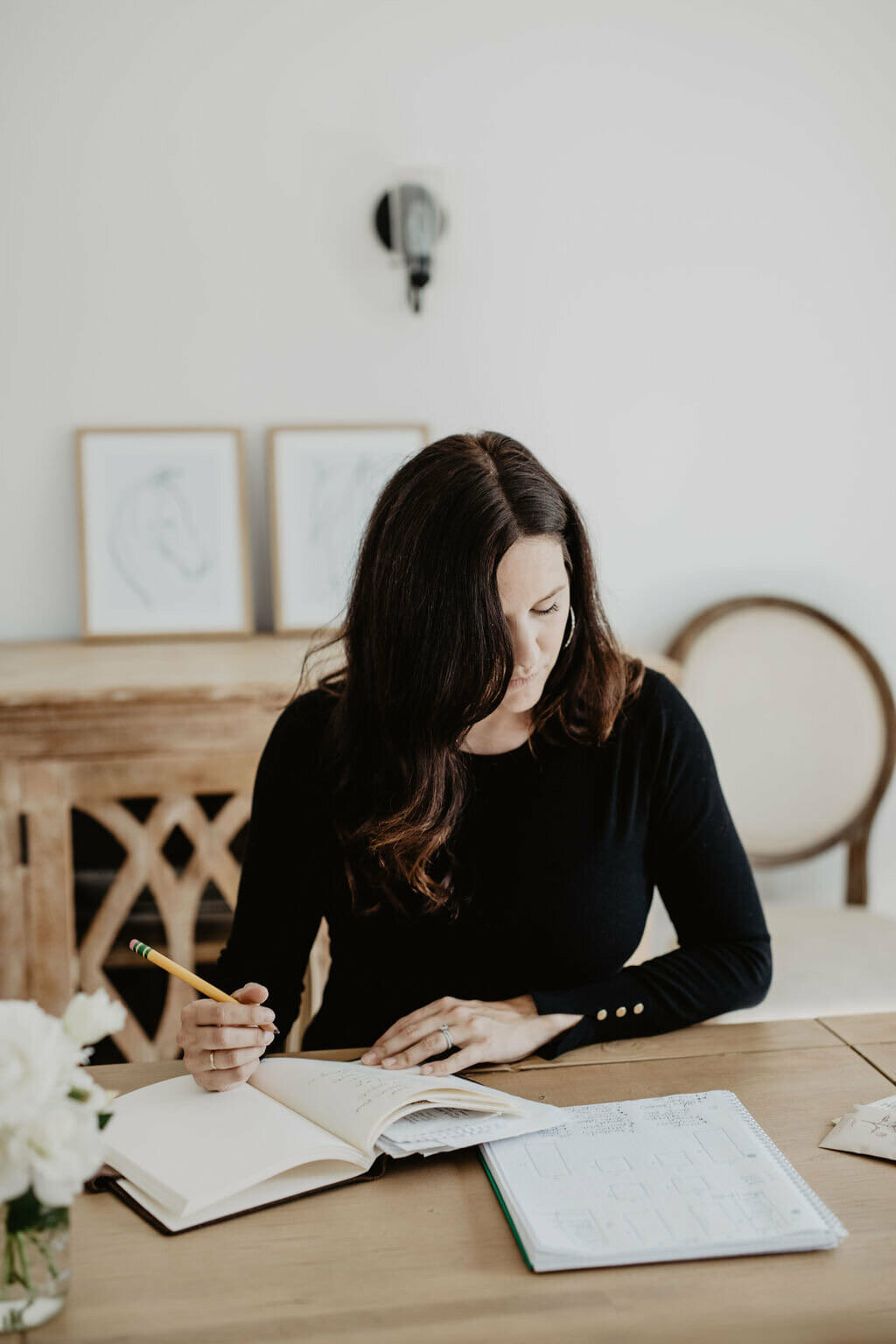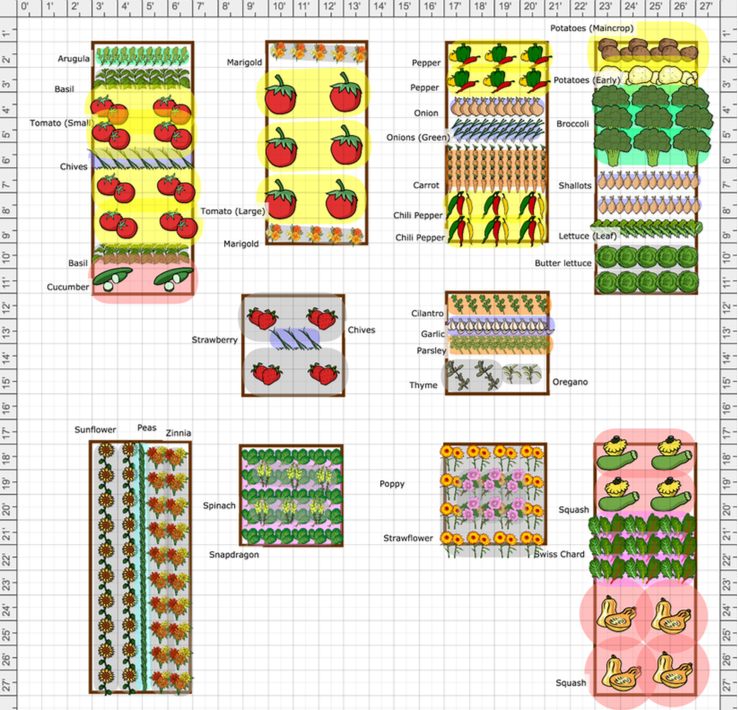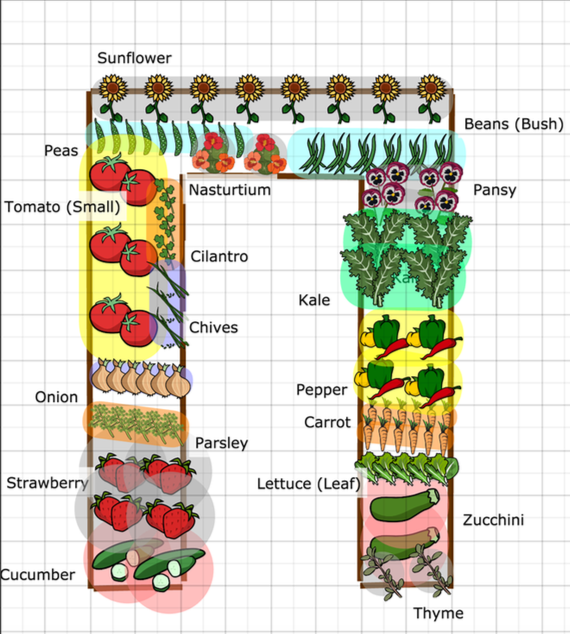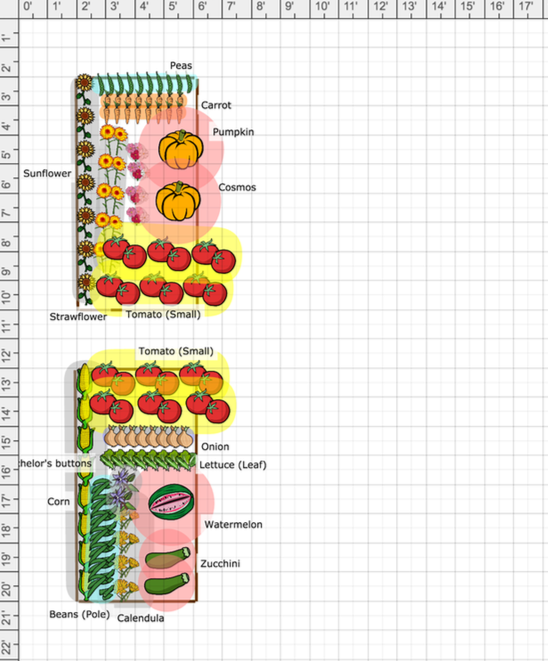
How to map out the plants in your raised garden beds
I had a few friends and family members ask me to help them plan out their raised beds and figure out what plants to put where. I got out some graph paper and went for it. And LOVED it.
I used a colored pencil to sketch out the plants, and found that my creativity mixed with knowledge of veggie growing came together in a perfect little match.
One of my close friends recommended I try a computer program to professionalize my little garden maps and to offer it as a service, so I did both of those things.
After mapping out my own garden each season, and now half a dozen other people’s here is what I can tell you about my own strategy and style for mapping out the plants in a raised bed.
1. Location location location
First thing I do is outline the location of raised beds in the yard, and then the location of the beds in accordance with the house or any other structures like a fence or chicken coop. This helps me figure out where to place the tallest plants and anything that will spill over the edges of the bed.
2.But the big plants in first
Trellises, tall plants, and vines that drape are the biggest elements to a kitchen garden. I like to place trellises and tall plants along fences or back edges, so that it creates a natural border for your eyes. Vining plants that I choose to not trellis, like cucumber for instance, I like to drape over the edge of the beds, which is pretty, allows more air flow, and is space-saving. You can pack in some more plants knowing your cucumbers will actually be outside the beds as opposed to laying on the soil.
3. Decide your aesthetic
Some people like a very orderly and tidy garden, some like a wild and whimsical look. This will determine how you map things out. I do a mix of both – I like things like butter lettuce to be in tidy rows, but then tend to clump mid-sized plants like eggplant or peppers together with herbs around them to help keep pests away.
4. Companion plants
Once you have your big plants in, you can start to map out which companion plants are best to place near them, as well as what to keep farther away.
5. The rest of the plants
The rest of the plants can be placed now based on size – height and width both. From there you can think about color schemes if that matters to you.
6. Pollinators
I typically squeeze flowers in last, because they tend to need less space and can fill gaps well. I still consider height and companions here, as well as pest control. Marigolds for example are great to plant with tomatoes, and to keep bugs at bay.
There really isn’t a right and wrong way to do this, however there is a better way to plan your planting. Knowing in the very least which plants should be near and far from each other is my number one tip. That keeps the soil healthy and plants happy, which to me is the name of the game.



